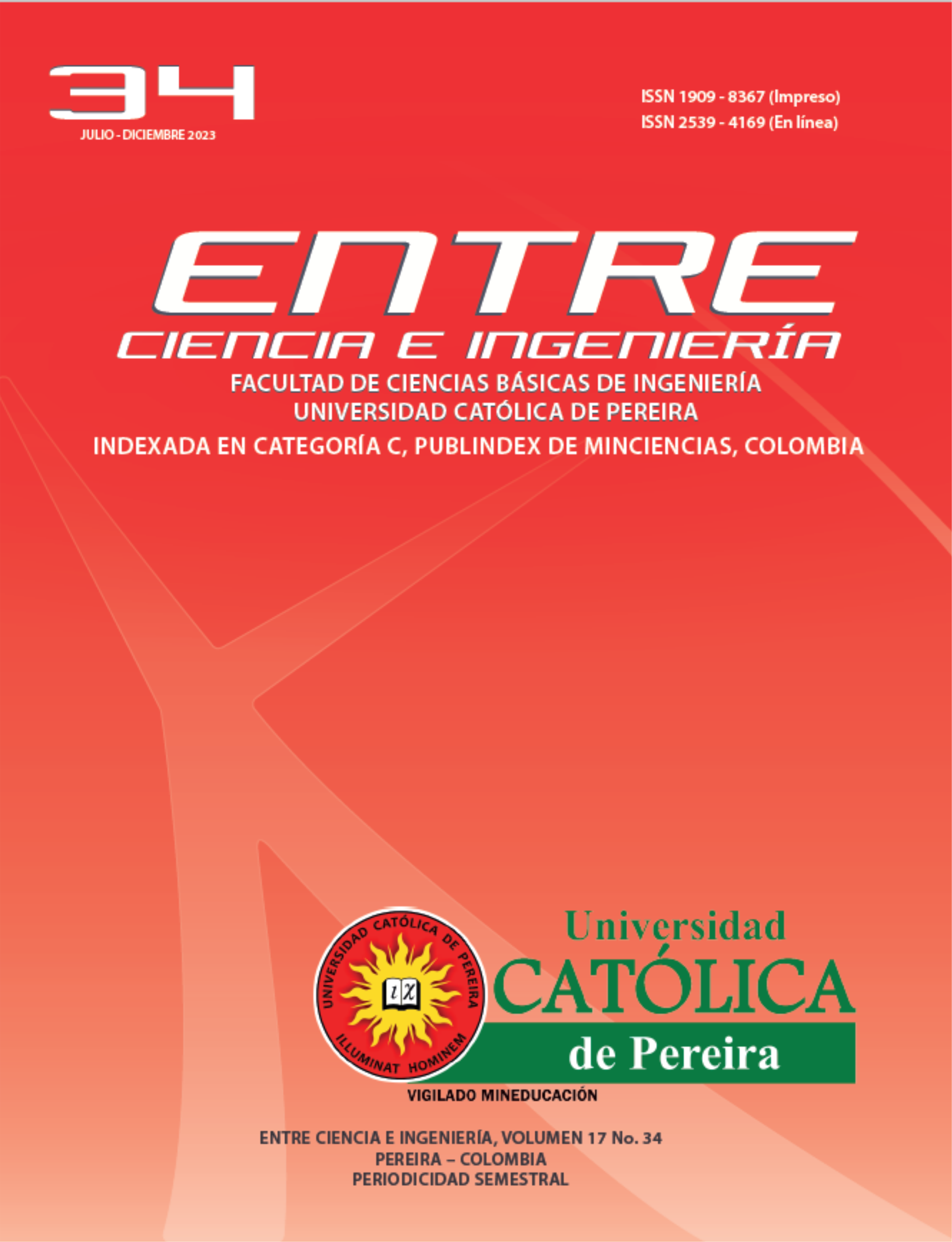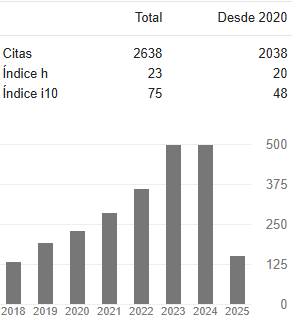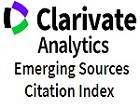Análisis de código estático: una revisión del árbol de la ciencia
DOI:
https://doi.org/10.31908/19098367.2846Keywords:
static analysis, alert, bug, defect, warning, fault codeAbstract
El análisis de código estático (SA) es el proceso de encontrar vulnerabilidades en el software. Este proceso se ha vuelto popular y una de las fases más evaluadas en el proceso de integración continua de software. Sin embargo, la literatura se encuentra dispersa en diferentes propuestas y faltan investigaciones que muestran las principales contribuciones y aplicaciones a este tema. El propósito de este artículo es identificar las principales contribuciones conceptuales de SA utilizando el algoritmo Tree of Science. Los resultados muestran tres ramas principales de esta área: aprendizaje automático para la detección de olores, técnicas de clasificación accionables y herramientas de alerta técnica. La Inteligencia Artificial ha estado transformando SA y los programadores tendrán acceso a herramientas más sofisticadas.
Downloads
References
S. Heckman and L. Williams, “A systematic literature review of actionable alert identification techniques for automated static code analysis,” Information and Software Technology, vol. 53, no. 4, pp. 363–387, Apr. 2011, doi: 10.1016/j.infsof.2010.12.007.
A. Kaur, S. Jain, S. Goel, and G. Dhiman, “A review on machine-learning based code smell detection techniques in object-oriented software system(s),” Recent Adv. Electr. Electron. Eng. (Former. Recent Pat. Electr. Electron. Eng.), vol. 14, no. 3, pp. 290–303, Apr. 2021, doi: 10.2174/2352096513999200922125839.
A. Al-Shaaby, H. Aljamaan, and M. Alshayeb, “Bad Smell Detection Using Machine Learning Techniques: A Systematic Literature Review,” Arab. J. Sci. Eng., vol. 45, no. 4, pp. 2341–2369, Apr. 2020, doi: 10.1007/s13369-019-04311-w.
M. I. Azeem, F. Palomba, L. Shi, and Q. Wang, “Machine learning techniques for code smell detection: A systematic literature review and meta-analysis,” Information and Software Technology, vol. 108, pp. 115–138, Apr. 2019, doi: 10.1016/j.infsof.2018.12.009.
A. Akremi, “Software security static analysis false alerts handling approaches,” Int. J. Adv. Comput. Sci. Appl., vol. 12, no. 11, 2021, doi: 10.14569/ijacsa.2021.0121180.
D. S. Valencia-Hernandez, S. Robledo, R. Pinilla, N. D. Duque-Méndez, and G. Olivar-Tost, “SAP Algorithm for Citation Analysis: An improvement to Tree of Science,” Ing. Inv., vol. 40, no. 1, pp. 45–49, Jan. 2020, doi: 10.15446/ing.investig.v40n1.77718.
M. Zuluaga, S. Robledo, G. Osorio-Zuluaga, L. Yathe, Gonzalez, and Taborda, “Metabolomics and pesticides: systematic literature review using graph theory for analysis of references,” Nova, vol. 14, no. 25, pp. 121–138, 2016, [Online]. Available: http://www.scielo.org.co/scielo.php?script=sci_arttext&pid=S1794-24702016000100010
J. A. Moral-Muñoz, E. Herrera-Viedma, A. Santisteban-Espejo, and M. J. Cobo, “Software tools for conducting bibliometric analysis in science: An up-to-date review,” EPI, vol. 29, no. 1, Jan. 2020, doi: 10.3145/epi.2020.ene.03.
S. Robledo, A. M. Grisales Aguirre, M. Hughes, and F. Eggers, “‘Hasta la vista, baby’ – will machine learning terminate human literature reviews in entrepreneurship?,” J. Small Bus. Manage., pp. 1–30, Aug. 2021, doi: 10.1080/00472778.2021.1955125.
P. Duque and E. J. D. Oliva, “Tendencias emergentes en la literatura sobre el compromiso del cliente: un análisis bibliométrico,” Estudios Gerenciales, pp. 120–132, Mar. 2022, doi: 10.18046/j.estger.2022.162.4528.
Z. B. Torres and C. O. P. Penagos, “Desarrollo tecnológico y de innovación en talleres de confección. Revisión de literatura,” bol.redipe, vol. 11, no. 6, pp. 211–224, Jun. 2022, doi: 10.36260/rbr.v11i6.1848.
J. D. G. Castellanos, P. L. D. Hurtado, L. Barahona, and E. Peña, “Marco de referencia y tendencias de investigación de economía colaborativa,” REC, vol. 10, no. 16, pp. 267–292, Jan. 2022, doi: 10.53995/23463279.1159.
D. A. Landínez-Martínez, J. F. Arias-Valencia, and A. S. Gómez-Tabares, “Executive Dysfunction in Adolescent with Obesity: A Systematic Review,” psykhe, May 2022, doi: 10.7764/psykhe.2020.21727.
J. A. González-Mendoza and M. del M. Calderon-Contreras, “Teletrabajo y sus impactos: una revisión y análisis bibliométrico,” Aibi revista investig. adm. ing., vol. 10, no. 2, Jul. 2022, doi: 10.15649/2346030x.2437.
E. G. Muñoz, R. Fabregat, J. Bacca-Acosta, N. Duque-Méndez, and C. Avila-Garzon, “Augmented Reality, Virtual Reality, and Game Technologies in Ophthalmology Training,” Information, vol. 13, no. 5, p. 222, Apr. 2022, doi: 10.3390/info13050222.
J. E. Gutiérrez-Lopera, J. A. Toloza-Rangel, Á. J. Soto-Vergel, O. A. López-Bustamante, and D. Guevara-Ibarra, “VEHÍCULOS TERRESTRES NO TRIPULADOS, SUS APLICACIONES Y TECNOLOGÍAS DE IMPLEMENTACIÓN,” ingeniare, no. 30, pp. 47–71, May 2021, doi: 10.18041/1909-2458/ingeniare.30.7925.
F. Eggers, H. Risselada, T. Niemand, and S. Robledo, “Referral campaigns for software startups: The impact of network characteristics on product adoption,” J. Bus. Res., vol. 145, pp. 309–324, Jun. 2022, doi: 10.1016/j.jbusres.2022.03.007.
S. R. Chidamber and C. F. Kemerer, “A metrics suite for object oriented design,” IEEE Trans. Software Eng., vol. 20, no. 6, pp. 476–493, Jun. 1994, doi: 10.1109/32.295895.
B. Chess and G. McGraw, “Static analysis for security,” IEEE Security Privacy, vol. 2, no. 6, pp. 76–79, Nov. 2004, doi: 10.1109/MSP.2004.111.
D. Hovemeyer and W. Pugh, “Finding bugs is easy,” SIGPLAN Not., vol. 39, no. 12, pp. 92–106, Dec. 2004, doi: 10.1145/1052883.1052895.
S. S. Heckman, “Adaptively ranking alerts generated from automated static analysis,” XRDS, vol. 14, no. 1, pp. 1–11, Dec. 2007, doi: 10.1145/1349332.1349339.
J. R. Ruthruff, J. Penix, J. D. Morgenthaler, S. Elbaum, and G. Rothermel, “Predicting accurate and actionable static analysis warnings: an experimental approach,” in Proceedings of the 30th international conference on Software engineering, Leipzig, Germany, May 2008, pp. 341–350. doi: 10.1145/1368088.1368135.
A. Bessey et al., “A few billion lines of code later: using static analysis to find bugs in the real world,” Commun. ACM, vol. 53, no. 2, pp. 66–75, Feb. 2010, doi: 10.1145/1646353.1646374.
B. Johnson, Y. Song, E. Murphy-Hill, and R. Bowdidge, “Why don’t software developers use static analysis tools to find bugs?,” in 2013 35th International Conference on Software Engineering (ICSE), May 2013, pp. 672–681. doi: 10.1109/ICSE.2013.6606613.
M. Beller, R. Bholanath, S. McIntosh, and A. Zaidman, “Analyzing the State of Static Analysis: A Large-Scale Evaluation in Open Source Software,” in 2016 IEEE 23rd International Conference on Software Analysis, Evolution, and Reengineering (SANER), Mar. 2016, vol. 1, pp. 470–481. doi: 10.1109/SANER.2016.105.
F. Zampetti, S. Scalabrino, R. Oliveto, G. Canfora, and M. Di Penta, “How Open Source Projects Use Static Code Analysis Tools in Continuous Integration Pipelines,” in 2017 IEEE/ACM 14th International Conference on Mining Software Repositories (MSR), May 2017, pp. 334–344. doi: 10.1109/MSR.2017.2.
S. Hallem, B. Chelf, Y. Xie, and D. Engler, “A system and language for building system-specific, static analyses,” SIGPLAN Not., vol. 37, no. 5, pp. 69–82, May 2002, doi: 10.1145/543552.512539.
J. Zheng, L. Williams, N. Nagappan, W. Snipes, J. P. Hudepohl, and M. A. Vouk, “On the value of static analysis for fault detection in software,” IEEE Trans. Software Eng., vol. 32, no. 4, pp. 240–253, Apr. 2006, doi: 10.1109/TSE.2006.38.
N. Ayewah, W. Pugh, D. Hovemeyer, J. D. Morgenthaler, and J. Penix, “Using Static Analysis to Find Bugs,” IEEE Softw., vol. 25, no. 5, pp. 22–29, Sep. 2008, doi: 10.1109/MS.2008.130.
H. M. Kienle, J. Kraft, and T. Nolte, “System-specific static code analyses: a case study in the complex embedded systems domain,” Software Quality Journal, vol. 20, no. 2, pp. 337–367, Jun. 2012, doi: 10.1007/s11219-011-9138-7.
D. Baca, B. Carlsson, K. Petersen, and L. Lundberg, “Improving software security with static automated code analysis in an industry setting,” Softw. Pract. Exp., vol. 43, no. 3, pp. 259–279, Mar. 2013, doi: 10.1002/spe.2109.
C. Sadowski, E. Aftandilian, A. Eagle, L. Miller-Cushon, and C. Jaspan, “Lessons from building static analysis tools at Google,” Commun. ACM, vol. 61, no. 4, pp. 58–66, Mar. 2018, doi: 10.1145/3188720.
C. Vassallo, S. Panichella, F. Palomba, S. Proksch, H. C. Gall, and A. Zaidman, “How developers engage with static analysis tools in different contexts,” Empirical Software Engineering, vol. 25, no. 2, pp. 1419–1457, Mar. 2020, doi: 10.1007/s10664-019-09750-5.
R. Gu et al., “Towards Efficient Large-Scale Interprocedural Program Static Analysis on Distributed Data-Parallel Computation,” IEEE Trans. Parallel Distrib. Syst., vol. 32, no. 4, pp. 867–883, Apr. 2021, doi: 10.1109/TPDS.2020.3036190.
F. Pecorelli, D. Di Nucci, C. De Roover, and A. De Lucia, “A large empirical assessment of the role of data balancing in machine-learning-based code smell detection,” J. Syst. Softw., vol. 169, p. 110693, Nov. 2020, doi: 10.1016/j.jss.2020.110693.
F. Pecorelli, S. Lujan, V. Lenarduzzi, F. Palomba, and A. De Lucia, “On the adequacy of static analysis warnings with respect to code smell prediction,” Empir. Softw. Eng., vol. 27, no. 3, p. 64, Mar. 2022, doi: 10.1007/s10664-022-10126-5.
F. Pecorelli, F. Palomba, D. Di Nucci, and A. De Lucia, “Comparing Heuristic and Machine Learning Approaches for Metric-Based Code Smell Detection,” in 2019 IEEE/ACM 27th International Conference on Program Comprehension (ICPC), May 2019, pp. 93–104. doi: 10.1109/ICPC.2019.00023.
D. Di Nucci, F. Palomba, D. A. Tamburri, A. Serebrenik, and A. De Lucia, “Detecting code smells using machine learning techniques: Are we there yet?,” in 2018 IEEE 25th International Conference on Software Analysis, Evolution and Reengineering (SANER), Mar. 2018, pp. 612–621. doi: 10.1109/SANER.2018.8330266.
F. Arcelli Fontana, M. V. Mäntylä, M. Zanoni, and A. Marino, “Comparing and experimenting machine learning techniques for code smell detection,” Empirical Software Engineering, vol. 21, no. 3, pp. 1143–1191, Jun. 2016, doi: 10.1007/s10664-015-9378-4.
S. Lujan, F. Pecorelli, F. Palomba, A. De Lucia, and V. Lenarduzzi, “A preliminary study on the adequacy of static analysis warnings with respect to code smell prediction,” presented at the ESEC/FSE ’20: 28th ACM Joint European Software Engineering Conference and Symposium on the Foundations of Software Engineering, Virtual USA, Nov. 2020. doi: 10.1145/3416505.3423559.
G. Catolino, F. Palomba, F. A. Fontana, A. De Lucia, A. Zaidman, and F. Ferrucci, “Improving change prediction models with code smell-related information,” Empirical Software Engineering, vol. 25, no. 1, pp. 49–95, Jan. 2020, doi: 10.1007/s10664-019-09739-0.
F. Pecorelli, F. Palomba, F. Khomh, and A. De Lucia, “Developer-driven code smell prioritization,” presented at the MSR ’20: 17th International Conference on Mining Software Repositories, Seoul Republic of Korea, Jun. 2020. doi: 10.1145/3379597.3387457.
S. Shcherban, P. Liang, A. Tahir, and X. Li, “Automatic Identification of Code Smell Discussions on Stack Overflow: A Preliminary Investigation,” in Proceedings of the 14th ACM / IEEE International Symposium on Empirical Software Engineering and Measurement (ESEM), Bari, Italy, Oct. 2020, pp. 1–6. doi: 10.1145/3382494.3422161.
A. K. Das, S. Yadav, and S. Dhal, “Detecting Code Smells using Deep Learning,” in TENCON 2019 - 2019 IEEE Region 10 Conference (TENCON), Oct. 2019, pp. 2081–2086. doi: 10.1109/TENCON.2019.8929628.
B. H. Dang, “A Practical Approach for Ranking Software Warnings from Multiple Static Code Analysis Reports,” in 2020 SoutheastCon, Mar. 2020, vol. 2, pp. 1–7. doi: 10.1109/SoutheastCon44009.2020.9368277.
D. Wang, H. Zhang, R. Liu, M. Lin, and W. Wu, “Predicting bugs’ components via mining bug reports,” J. Softw. Maint. Evol.: Res. Pract., vol. 7, no. 5, Apr. 2012, doi: 10.4304/jsw.7.5.1149-1154.
T. Boland and P. E. Black, “Juliet 1.1 C/C++ and Java Test Suite,” Computer , vol. 45, no. 10, pp. 88–90, Oct. 2012, doi: 10.1109/MC.2012.345.
S. Allier, N. Anquetil, A. Hora, and S. Ducasse, “A Framework to Compare Alert Ranking Algorithms,” in 2012 19th Working Conference on Reverse Engineering, Oct. 2012, pp. 277–285. doi: 10.1109/WCRE.2012.37.
M. Sharma, P. Bedi, K. K. Chaturvedi, and V. B. Singh, “Predicting the priority of a reported bug using machine learning techniques and cross project validation,” in 2012 12th International Conference on Intelligent Systems Design and Applications (ISDA), Nov. 2012, pp. 539–545. doi: 10.1109/ISDA.2012.6416595.
H. Shen, J. Fang, and J. Zhao, “EFindBugs: Effective Error Ranking for FindBugs,” in 2011 Fourth IEEE International Conference on Software Testing, Verification and Validation, Mar. 2011, pp. 299–308. doi: 10.1109/ICST.2011.51.
G. Liang, L. Wu, Q. Wu, Q. Wang, T. Xie, and H. Mei, “Automatic construction of an effective training set for prioritizing static analysis warnings,” in Proceedings of the IEEE/ACM international conference on Automated software engineering, Antwerp, Belgium, Sep. 2010, pp. 93–102. doi: 10.1145/1858996.1859013.
M. G. Nanda, M. Gupta, S. Sinha, S. Chandra, D. Schmidt, and P. Balachandran, “Making defect-finding tools work for you,” in Proceedings of the 32nd ACM/IEEE International Conference on Software Engineering - Volume 2, Cape Town, South Africa, May 2010, pp. 99–108. doi: 10.1145/1810295.1810310.
S. Heckman and L. Williams, “A Model Building Process for Identifying Actionable Static Analysis Alerts,” in 2009 International Conference on Software Testing Verification and Validation, Apr. 2009, pp. 161–170. doi: 10.1109/ICST.2009.45.
P. Chen et al., “IntFinder: Automatically detecting integer bugs in x86 binary program,” in Information and Communications Security, Berlin, Heidelberg: Springer Berlin Heidelberg, 2009, pp. 336–345. doi: 10.1007/978-3-642-11145-7_26.
D. S. Mendonça and M. Kalinowski, “An empirical investigation on the challenges of creating custom static analysis rules for defect localization,” Software Quality Journal, Jan. 2022, doi: 10.1007/s11219-021-09580-z.
D. Serban, B. Golsteijn, R. Holdorp, and A. Serebrenik, “SAW-BOT: Proposing Fixes for Static Analysis Warnings with GitHub Suggestions,” in 2021 IEEE/ACM Third International Workshop on Bots in Software Engineering (BotSE), Jun. 2021, pp. 26–30. doi: 10.1109/BotSE52550.2021.00013.
D. Marcilio, C. A. Furia, R. Bonifácio, and G. Pinto, “SpongeBugs: Automatically generating fix suggestions in response to static code analysis warnings,” J. Syst. Softw., vol. 168, p. 110671, Oct. 2020, doi: 10.1016/j.jss.2020.110671.
V. Lenarduzzi, F. Lomio, H. Huttunen, and D. Taibi, “Are SonarQube Rules Inducing Bugs?,” in 2020 IEEE 27th International Conference on Software Analysis, Evolution and Reengineering (SANER), Feb. 2020, pp. 501–511. doi: 10.1109/SANER48275.2020.9054821.
K. Liu, A. Koyuncu, D. Kim, and T. F. Bissyandè, “AVATAR: Fixing Semantic Bugs with Fix Patterns of Static Analysis Violations,” in 2019 IEEE 26th International Conference on Software Analysis, Evolution and Reengineering (SANER), Feb. 2019, pp. 1–12. doi: 10.1109/SANER.2019.8667970.
R. Bavishi, H. Yoshida, and M. R. Prasad, “Phoenix: automated data-driven synthesis of repairs for static analysis violations,” in Proceedings of the 2019 27th ACM Joint Meeting on European Software Engineering Conference and Symposium on the Foundations of Software Engineering, Tallinn, Estonia, Aug. 2019, pp. 613–624. doi: 10.1145/3338906.3338952.
M. Wyrich and J. Bogner, “Towards an Autonomous Bot for Automatic Source Code Refactoring,” in 2019 IEEE/ACM 1st International Workshop on Bots in Software Engineering (BotSE), May 2019, pp. 24–28. doi: 10.1109/BotSE.2019.00015.
B. Aloraini, M. Nagappan, D. M. German, S. Hayashi, and Y. Higo, “An empirical study of security warnings from static application security testing tools,” J. Syst. Softw., vol. 158, p. 110427, Dec. 2019, doi: 10.1016/j.jss.2019.110427.
E. A. Alikhashashneh, R. R. Raje, and J. H. Hill, “Using Machine Learning Techniques to Classify and Predict Static Code Analysis Tool Warnings,” in 2018 IEEE/ACS 15th International Conference on Computer Systems and Applications (AICCSA), Oct. 2018, pp. 1–8. doi: 10.1109/AICCSA.2018.8612819.
Downloads
Published
Issue
Section
License
Copyright (c) 2023 Entre ciencia e ingeniería

This work is licensed under a Creative Commons Attribution-NonCommercial 4.0 International License.



















